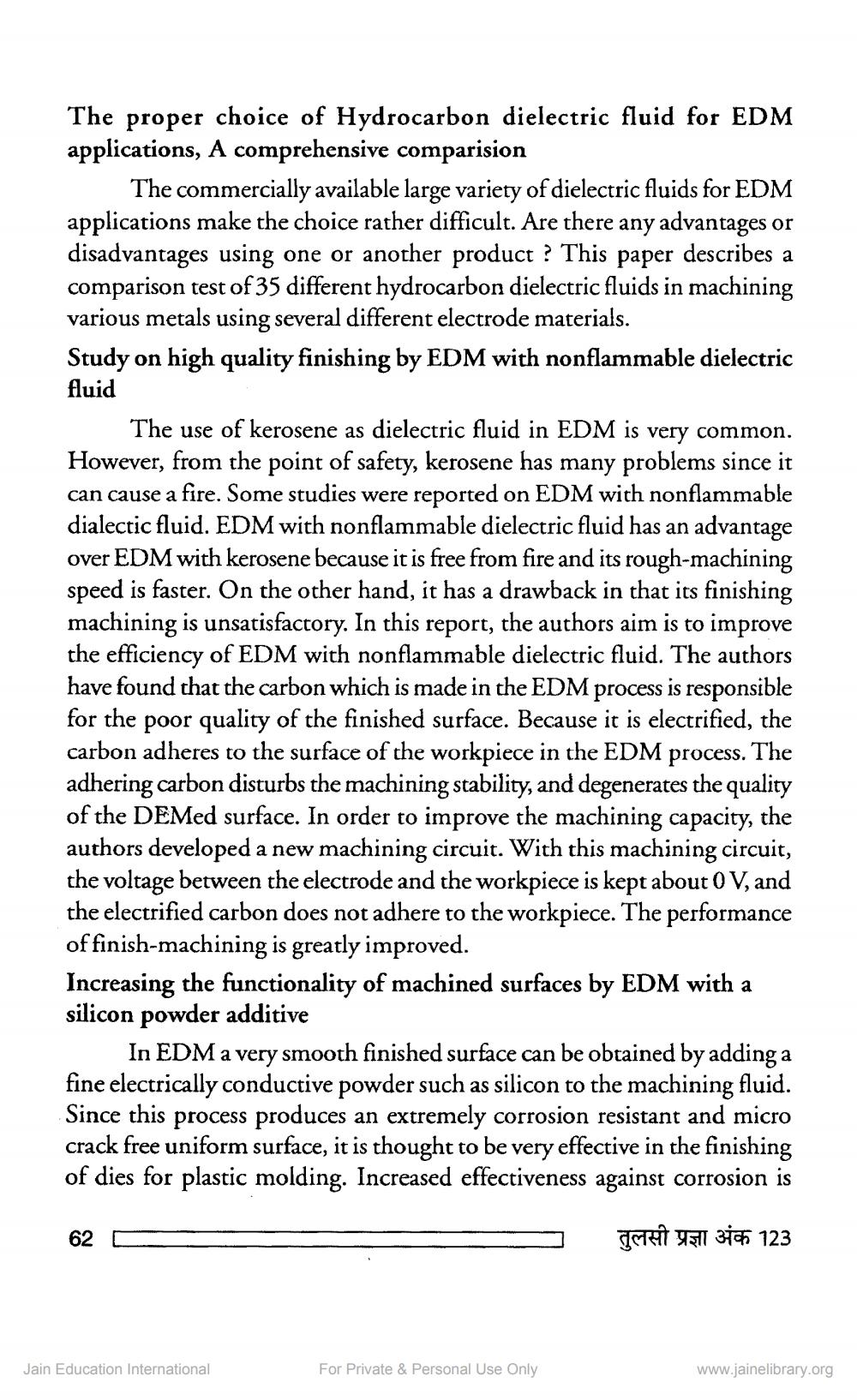________________
The proper choice of Hydrocarbon dielectric fluid for EDM applications, A comprehensive comparision
The commercially available large variety of dielectric fluids for EDM applications make the choice rather difficult. Are there any advantages or disadvantages using one or another product ? This paper describes a comparison test of 35 different hydrocarbon dielectric fluids in machining various metals using several different electrode materials. Study on high quality finishing by EDM with nonflammable dielectric fluid
The use of kerosene as dielectric fluid in EDM is very common. However, from the point of safety, kerosene has many problems since it can cause a fire. Some studies were reported on EDM with nonflammable dialectic fluid. EDM with nonflammable dielectric fluid has an advantage over EDM with kerosene because it is free from fire and its rough-machining speed is faster. On the other hand, it has a drawback in that its finishing machining is unsatisfactory. In this report, the authors aim is to improve the efficiency of EDM with nonflammable dielectric fluid. The authors have found that the carbon which is made in the EDM process is responsible for the poor quality of the finished surface. Because it is electrified, the carbon adheres to the surface of the workpiece in the EDM process. The adhering carbon disturbs the machining stability, and degenerates the quality of the DEMed surface. In order to improve the machining capacity, the authors developed a new machining circuit. With this machining circuit, the voltage between the electrode and the workpiece is kept about 0 V, and the electrified carbon does not adhere to the workpiece. The performance of finish-machining is greatly improved. Increasing the functionality of machined surfaces by EDM with a silicon powder additive
In EDM a very smooth finished surface can be obtained by adding a fine electrically conductive powder such as silicon to the machining fluid. Since this process produces an extremely corrosion resistant and micro crack free uniform surface, it is thought to be very effective in the finishing of dies for plastic molding. Increased effectiveness against corrosion is
62 D
=
IME 4511 310 123
Jain Education International
For Private & Personal Use Only
www.jainelibrary.org




